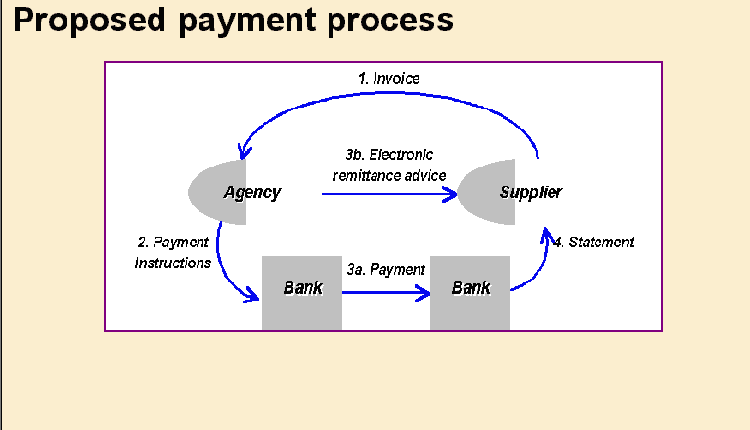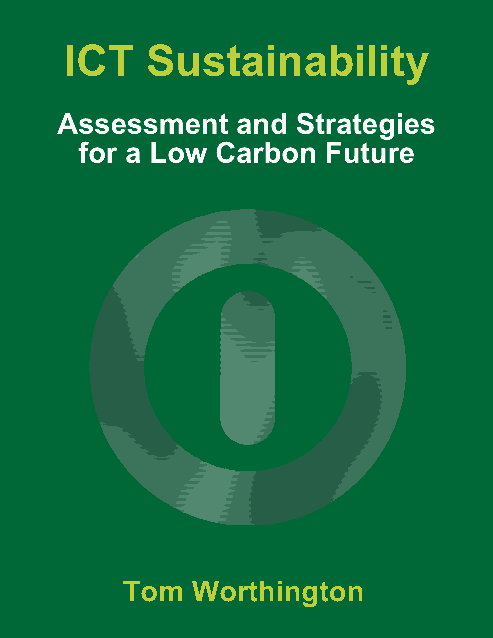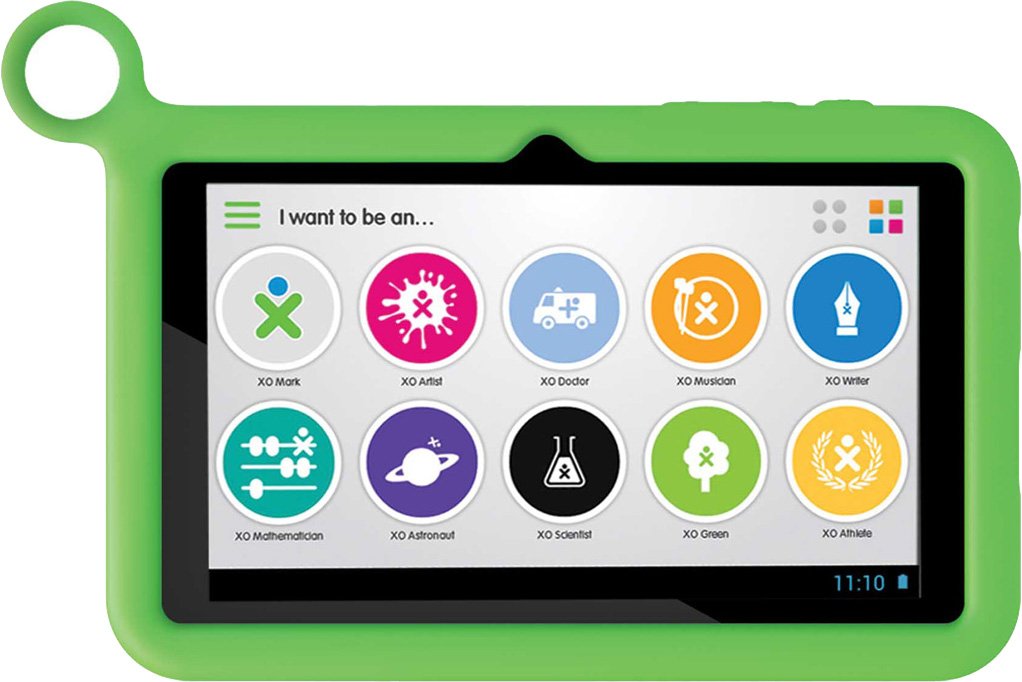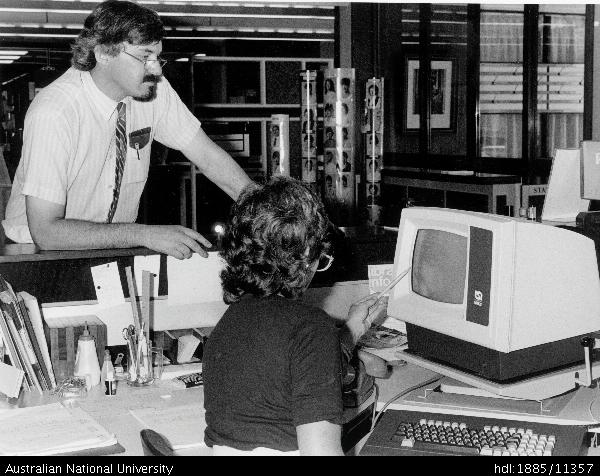Description: Tom Worthington reviews his last five years as a student of education, at the Australian National University, University of Southern Queensland, Canberra Institute of Technology and a North American university. He suggests that university academics should be trained in entrepreneurship, as well as teaching, to prepare them for an uncertain future where they will have multiple careers working mostly as part time casual staff. Tom proposes Australian universities should be preparing for a E80 blend of eduction: 80% e-Learning plus 20% classroom based.
These are the notes for the presentation using HTML Slidy. If viewing the slides you can press "A" to display these notes (and press "A" again to hide them). To advance to the next slide, press "page down", or click the left mouse button.
My most useful lessen from being a student of education is how much hard work it is being a university student, especially a part time, on-line, international student. It is not as depicted in TV advertisements, such as We're here for you (Swinburne University, 2016). Tutors do not appear out of nowhere just when you need help. Course administration and the content of courses are difficult to understand, time consuming, frustrating and very, very difficult. Designing and delivering higher education courses and programs required specialized skills which university academics need to be trained for in formal, assessed and accredited programs. I have spent the last five years learning to teach, including learning to teach international on-line students, by being an international on-line student.
After seventeen years working as a computer professional for the Australian Government, I decided to become a private computer consultant in 1999. My work would be short term projects for companies and government agencies, about their computer strategies and policies. This would involve long periods working alone in my home office.
To give some continuity, I volunteered to help out at local universities and was appointed a Visiting Fellow in what is now the Research School of Computer Science at the Australian National University (this year ANU celebrates 45 Years of Comp Sci). In return for a desk and honorary status as academic staff, I helped out with research and teaching. I found myself drawn to the issue of how to use computer technology for teaching. It seemed obvious that computers and the Internet should be used for teaching computer science students, but how and what?
At first I tried the obvious step of using the World Wide Web (the web), to provide lecture materials, with HTML in place of Powerpoint to prepare and present lecture slides and notes. Then I added audio to the slides for on-line delivery. However, these were not satisfying for me as a presenter, or for the student audience. I did not know it but I was trapped in the "lecture 1.0" paradigm.
In 2006, I was appointed Director of the Professional Development Board of the Australian Computer Society (ACS), responsible for postgraduate education and short courses for the society's 13,000 members. My role was largely political and not based any special expertise with education. While I fought for budget in the ACS governing council, the staff educated me on how computers and the Internet could be used for learning. In particular, Dr David Lindley, the Academic Principal and Chief Examiner of the ACS, provided a very clear vision of on-line professional education (Lindley, 2007).
In May 2007 I was contracted by a local government agency to run a short course in "Writing for the Web". To do this I set up an instance of the Moodle Learning Management System (LMS) on my company website and had the agency set up a temporary electronic classroom, to deliver the material in real time. This worked well and I repeated this for a one day workshop at the ANU, at the request of the the National Archives of Australia (NAA). However, I could not see how to translate this "training" to the university education context. At this stage I envisaged using the web to enhance face-to-face learning, using facilities such as a Technology Enabled Active Learning (TEAL) room. At that stage it was not conceivable that courses, especially courses at a leading research university could be conducted on-line.
In 2008, after ending my term as ACS Director of Professional Development, the ACS commissioned me to design an on-line course in "Green IT Strategies", implemented using Moodle. Not having any previous experience in designing a pure on-line course, I used one of the existing courses as a template. The process took three months, with training and mentoring by ACS and I documented it in thirteen blog postings, "e-Learning Course on Green ICT Strategies". What I did not realize at the time was that the format used by ACS was a conventional distance education on-line course design, very similar to that used by Open University UK and other open and distance universities around the world. For the next eight years, much of my time was been spent in understanding and refining this approach to DE, implemented using Moodle and other open source tools.
In 2008 the ANU began a transition from the Web CT LMS to the Moodle. I had attended an introductory Web CT course, but had not used it for teaching. However, on the introductory Moodle training course for ANU staff, I realized that this was a tool I was already familiar with from my ACS work and had designed a course for. While other students were trying their first course outline, I logged into the ACS Moodle server, backed up the Green ICT course and restored it to the ANU server. The course displayed using the ANU theme and, in a flash of inspiration, I realized I could perhaps make a few changes to have a course suitable for both ACS and ANU and that an ANU course need have no lectures or examinations. I have spent the last eight years refining that process.
The course changes needed for ANU were relatively minor. The most difficult task was to convince Australia's leading research university (ANU), that a course with no lectures and no examinations could meet quality standards. What made this possible was the way a DE course is well structured and self documenting, including the relating course materials to assessment, to skills to external standards. Both the ACS and ANU versions of the course were approved by their respective academic standards committees and commenced in early 2009.
One of the students in the first student cohort at ANU was the Chief Information Officer at a North American university. After completing the course, they asked if their institution could run it. So I provided a copy of the Moodle course backup file and they adapted this for delivery as the graduate course Green ICT Strategies (COMP 635), this was then made into an undergraduate self-paced version by Mary Pringle, in 2014.
Having run the green ICT course each year for ANU and ACS I felt I had a reasonable grasp on this form of e-learning. Slight refinements were made to the materials, in particular reducing the number of separate documents provided to the students.
I continued using web based slides for live lectures, until mid 2008, when in an epiphany, I found myself announcing to the students that this was to be my last lecture , which found its way into a Wikiversity entry (Lecture 2.0, 2012).
In a flash of self-realization I understood that I did not like giving lectures, had never enjoyed attending them and I had an obligation to my students, and myself, to seek better ways to teach.
In 2011 I enrolled in the ANU's Graduate Certificate in Higher Education (GradCertHE), which all university teaching staff were expected to complete. Due to my interest in e-learning, I took advantage of an ANU/USQs partnership, allowing me to substitute two USQ courses from their education faculty, for two of the four ANU courses in the certificate program. I selected Online Pedagogy in Practice (EDU8114) and Assessment, Evaluation and Learning (EDU5713). These were both delivered on-line from USQ's campus in the regional city of Toowoomba, 1,000 km north of Canberra: a regional university delivering on-line courses national and internationally.
An ANU-USQ Memorandum of Understanding (MOU), allowed ANU students to enroll in USQ courses. However, the cross institutional study procedures were so complex, I instead enrolled at USQ as a professional development student and then applied for credit at ANU. One of the lessons I learned as a student is how much of an impediment the administrative processes of institutions can be. In choosing where to study later, the simplicity of the administration was as important as the quality of the education provided. The option of enrolling in one course, outside a program is an option university should allow.
The USQ courses used Moodle and were in a similar format to those I was designing and delivering. The approach used for the course design and the content followed the distance education approach developed by OUUK, with carefully prepared and tested course materials and standardized assessment based on asynchronous and synchronous forum participation, group and individual assignments. Perhaps more important that the skills learned, was the experience of being an e-learning distance education student.
By July 2013, I had completed the four courses required for the ANU GradCertHE and the next step would have been to articulate into the ANU Masters of Education program. However, ANU decided to discontinue offering qualifications in education and I could not proceed beyond a certificate.
Higher Education Certificates have been the way Australian universities expected their staff to learn about teaching. However, universities seem ambivalence about such a qualification: is it education or staff training?
In 2013 I was teaching on-line courses for ACS, as well as ANU. I was asked if I was interested in helping teach vocational education and training (VET) courses for ACS. The Australian VET sector is highly regulated and this required me to obtain a Certificate IV in Training and Assessment (CERT IV TAE40110). Having recently completed the university equivalent, I was able to obtain 80% of the CERT IV by Recognition of Prior Learning (RPL) by August 2013. This was through the Canberra Institute of Technology (CIT), where an assessor helped me assemble the required evidence in a one-on-one face to face session.
The remaining 20% of the certification was thorough on-line modules via Moodle. Much of the material was familiar from previous studies and this was, in theory, a lower level qualification (Level 4, versus the the Graduate Certificate's Level 9, on the Australian Qualifications Framework), but it was still not easy. I realized how much I still had to learn about teaching and e-learning. One of the main lessons I have learned as an on-line student is how hard being a student is (something teachers need to be reminded of).
My studies made me better understand what my students were going through, had me work harder on making course materials simpler and assessment tasks clearer for my students. One experience stands out: in the USA course Assessment, Evaluation and Learning (EDU5713), I read a considerable amount of research literature about student's attitudes to harassment. One point was that students do not read the detailed feedback provided with marked written assignments. I did not believe this literature: I spent much effort writing detailed comments on assignments, so surely the students read these comments. I got back the first assignment for this course, read the mark on the cover and then tossed it aside. In a flash of insight I realized I have not read the comments, exhibiting the behavior I claimed good students did not have. After than I studied techniques to get student attention and applied them in my course design.
This study paid off: I had less difficulty with planning and delivering courses and my student feedback scores were higher.
In 2013 there was a limited selection of Masters of Education programs available in Australia for someone interested in tertiary teaching and without a bachelors degree in education. Most programs offered were for school teachers and required at least a diploma or degree in education.
A few more MEd options are now available in 2016: By Research at ACU in Canberra or at UNE, or on-line by Coursework at ECU, JCU, Monash University, UNE. However, most MEds are still aimed at classroom school teaching and require at least a diploma in education.
After searching on-line and attending several graduate programs fares, I then looked to international DE programs. The two institutions which appeared frequently in the literature were the Open University UK and a North American university. The North American institution replied more promptly and personally than OUUK, so I enrolled. One issue with enrolling in any program is the amount of time and emotion invested in the process. With this institution I was reasonably sure of being admitted, as they were using a course I had designed. Kneale (2015) reports my comments on program selection in Chapter 2 "The Diversity of Master's Provisions" (p. 22) and at the beginning of Part 5 "Curriculum Design" (p. 201).
I commenced an introductory Masters course in January 2014.
The DE courses are structured much like those of other "open" universities: 12 weeks grouped in modules of three or four weeks, with three or four major assessment items (some group work) and about 25% assessment for forum contributions. Each course has a cohort of about 25 students at the beginning, with a lost of about 25% of students in the first few weeks. There are one or two instructors. Students are typically mature age teaching staff of colleges, private training providers and military organizations, mostly in North America or expatriates around the world. Most courses are primarily asynchronous (non-real time), some with a small synchronous component.
The Moodle Learning Management System is used to provide electronic notes to students and for submission of assessment. Paper based text books are proved, supplemented by a reading list of research papers and videos available on-line. Assessment is by traditional written assignments, as well as multimedia materials (such as course modules produced by students), submitted via Moodle.
These are conventional distance education courses, with the advantages and disadvantages of materials designed through a rigorous process and intended to be used unchanged for several years.
The Capstone e-portfolio requires the students to reflect on their learning using five artifacts, usually assignments submitted (Hoven, 2015, p. 23). Rather than just leave the student to work this out for themselves, the e-portfolio is structured as a course, with an instructor and deliverables. Students receive feedback from the instructor and provide comment on each others draft e-portfolios.
This is an example of an artifact from a course, for the e-portfolio. In this paper, written as an assignment for the introductory course, I looked at the current and future climate for DE and the industry and formulated a strategy, reinvigorating the Colombo Plan, current business and administrative functions in DE, the fragmented approach to vocational education, the selection of learning technology.
When I enrolled in a North American program I assumed there would be minimal differences to an Australian university, with the common language and culture. However, there are subtle differences of language and practice. Some of these differences are amusing, such as one group of students were labeled "loons" by the instructor, which I thought inappropriate, until I discovered this was a reference to a North American bird. More seriously, differences in grading and what was expected in assignments caused difficulties. This put me in mind of my international students and their difficulties with plagiarism rules: rules which seem very clear and obvious to me, but not to my students from a different educational system.
One of the MEd courses I undertook was on mobile learning. Much to my embarrassment, I had to admit that I did not have a smart-phone or tablet computer. So I purchased a low cost smart-phone and tablet, of the type a student in a developing nation might have. In particular, one device was the XO Tablet Computer, from the Open Laptop Per Child project. These were used to try applications and develop a learning module, to be evaluated by other students. The revelation here were not the new educational Apps, but that existing desktop software, including Moodle and Mahara had been upgraded to use responsive web design and automatically adjusted their interface when displayed on a mobile device (see video "Tom Demonstrating Responsive Web Design"). This still requires the educational designer to consider the context of where the learner is. The mobile interface is useful for presenting small amounts of information and asking for a short response. However, the student is unlikely to be able to write a 4,000 word essay, while sitting on a bus.
The most useful aspect of being an on-line student of education is "dogfooding", a term coined by Harrison (2006) for the practice of those who develop a product to use it. In the case of education courses, the designers and instructors demonstrate that the technology they are advocating actually works and the students learn what it is like to be a DE student, before being an instructor or designer. Each course reminded me how crushingly lonely being a student can be, especially a distance student and even more so for an international student. As a result I take additional care now to ensure my course instructions as well as content are very clear and try to avoid cultural confusion. However, the experience of being a DE student can also be liberating, compared to a part time, after hours, campus student.
An issue which came up throughout my education studies was the difference between vocational training and academic education. The Australian VET sector tends to use a different approach to assessment to that of universities. Courses for graduate professionals tend to fall somewhere in between training and education. In designing courses for both professionals and university students, I found myself with one common set of course content, but two different assessment schemes. Vocational and professional training emphasizes competence (students are either "competent", or "not yet competent"), whereas academic education grades students into more levels (pass, credit, distinction high distinction), the exact meaning of which is not clear. Many university programs require students to obtain more than a "pass" in courses. After completing several courses on course and assessment design, in 2016 I decided to blend the two approaches by limiting the amount which some assessment items contributed to the student's final grade.
In 2015 I was invited to discuss some of these ideas at the University of Cambridge.
May,Peetz and Strachan (2013) detail how the Australian academic workforce is becoming increasingly casually employed and that this is not a path to permanent employment.
Australian universities are introducing lecture recording and learning management systems, to allow on-line delivery of education. However, university academics still cling to the idea that the typical student attends lectures and has the time to sit around the campus having deep intellectual discussions. Also the assumption is that the average student will want to go on to postgraduate research and obtain a tenured research position.
The reality is that less than half of students attend lectures: 30% at ANU a href="http://missunitwocents.tumblr.com/post/123364615920/that-sinking-feeling-counting-the-cost-of-live" title="'...attendance declines over semester to around 30% of original signup', That Sinking Feeling: Counting the Cost of Live Lectures, Professor Hughes Warrington, ANU, 6 July 2015">Warrington, 2015.
A recent item in the ANU student newspaper, Woroni, expresses concern over a new on-line program. The concern is not that the on-line program is inferior, but is superior to the existing lecture based program, so disadvantaging the campus based students (Kirpalani 2016).
Much of what is proposed under the banner of digital, electronic or on-line learning is not new in concept. Access to ubiquitous digital technology makes it much easier to implement.
While much education can be undertaken on-line, not all can. Students need to learn from experienced members of their discipline, learn to work in teams and learn to use equipment not available at home. A reasonable blend would be 80% on-line and 20% in a classroom.
Courses can be designed for on-line delivery and then necessary, or desirable, classroom components can be added.
Fraser, Greenfield, and Pancini (2016) suggest that early career academics need integrated and intentionally designed transition strategies, like those provided for students. I suggest we could go further and teach students to be teachers.
In addition to training in how to teach, students will also need training in how to be entrepreneurs. Graduates cannot expect to have a full time "permanent" jobs, so they need to learn to work in self-managed start-up teams, develop products and pitch them to customers.
The skills required by a university educator are much like those required of a VET teacher and of professional in industry: structure knowledge, communicate, lead and assess. Education can be offered for all of these by universities. One approach would be to offer the VET Cert IV in T&A, plus advanced units for university teaching and supervision. Incorporating VET would have the advantage of emphasizing speed and efficiency in teaching, as well as customizing the teaching to the student's needs.
This semester I have been tutoring three teams of ANU Techlaucher students in a program devised by Dr Shayne Flint. This provides a model which could be used more generally for teaching "soft" as well as hard skills to university students. This can be applied to any university program where the students are learning skills which can be applied in the workplace. The use of on-line project management tools allows for teaching of techniques of virtual teamwork and can be used with on-line distance education students.
Post-secondary educators and academics have been trained on the assumption they will be employed by a university or vocational education institution, or in a corporate training position. However, they are more likely to have a career made up of multiple short term contracts of a few days to a few years. This requires the educator to have the skills of a deal maker. Universities are now offering training in innovation centers, such the Canberra Innovation Network. This training is also suitable for preparing educators to be impresario.
For the course Instructional Design in Distance Education (MDDE 604) I was required to prepare a small course module, so I took the opportunity to prepare one on a topic I have been interested in for decades: innovation. The idea was that this would be an on-line module, used alongside a face-to-face series of workshops run by the Canberra Innovation Network (CBRIN) for students of universities in Canberra. I had been a mentor for the program for several years and was increasingly frustrated that while the students learned useful skills, none of this counted towards their degree. By adding an academic framework I hoped to make their extra-curricular activities curricula. I produced a further module for this "An Introduction to Entrepreneurship in Technology"for Openness in Distance Education (MDDE 622).


















